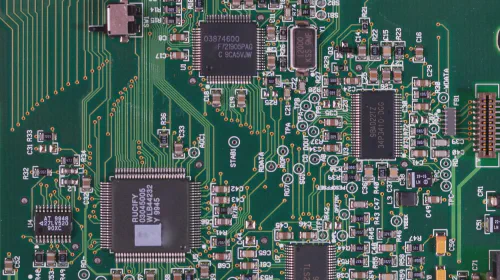Avalanche vs. Solana: A Comparison of Two Emerging Blockchains
Salomon Kisters
Mar 24, 2023This post may contain affiliate links. If you use these links to buy something we may earn a commission. Thanks!
Avalanche and Solana are two emerging blockchains gaining ground as compared to more prominent and popular cryptocurrencies such as Ethereum.
They might have a smaller market share than Ethereum; however, these rapidly-developing platforms offer much faster and cheaper functionality compared to their more established counterparts.
One of the most significant indicators of better performance for a blockchain is its transaction speed. Solana can carry out up to 65,000 transactions per second (TPS) with an average of about 3,900 transactions.
In contrast, Avalanche can only process a much smaller number, a maximum of 4,500 TPS averaging 20 transactions.
Many factors need to be considered when deciding which of the two is better suited to your needs, and we will be going over them in detail in this blog.
What is Avalanche?
Avalanche has risen through the ranks as a significant competitor for Ethereum.
As a host for decentralized apps and customized blockchain networks, Avalanche is also considered one of the fastest platforms for smart contract development. It runs on the Proof-of-Stake system. Ava Labs launched Avalanche in 2020 as a more cost-effective but scalable alternative to its leading competitors.
Avalanche is a layer-1 blockchain, just like Ethereum. However, it has a clear advantage over Ethereum because it is less expensive and more efficient than the older network. Avalanche has been created based on three interconnected blockchain technologies:
- Contact chain
- Exchange chain
- Platform chain
The exchange chain assumes the function of creating new virtual smart assets and trading them.
The contract chain, on the other hand, is responsible for the formation of smart contracts. The platform chain coordinates with Avalanche validators to allow users to create new subnets. A subnet is a self-contained network with its own rules for membership and token mechanics. It comprises a dynamic subset of Avalanche validators who collaborate to agree on the state of one or more blockchains. The primary network is responsible for managing and securing all three chains.
Avalanche is not only a layer-1 smart contract platform compatible with Ethereum, but it can also house many layer-2 projects that can be created on its platform. Because of the lower fees, this platform is more attractive to investors, making it a dominant layer-1 platform, second only to Ethereum and Bitcoin. Having a DeFi ecosystem, Avalanche has around 81 different applications available to users, some of which include protocols such as Aave and Curve.
AVAX Coin
The original currency for the Avalanche infrastructure is the AVAX. As of 2023, it is the 18th most valuable virtual coin, with a market share of approximately $5.3 billion. In September of last year, it had a supply of 296 million coins circulating in the market. The coin’s current value is $16.70.
What is Solana?
Solana is an open-source blockchain created in 2017 as a layer-1 blockchain platform. It is compatible with smart contract creation, including NFTs. The Solana Foundation, a non-profit organization dedicated to developing the Solana ecosystem, is in charge of the project. Developed as a direct competitor to Ethereum, this platform can process 65,000 transactions in a second compared to Ethereum’s speed of a mere 27 TPS. In the case of traditional fiat currency, Visa can process 1,700 transactions while Mastercard can do 5,000.
Blockchains require a consensus model to verify their transactions. Solana utilizes a revolutionary hybrid consensus system made up of Proof-of-Stake and Proof of History models. PoH allows for a public timeline to be made for all transactions. It also enables all the nodes present in the network to coordinate through a standardized public clock instead of using local ones. This makes it easier for all members to be in sync and make transactions more efficient.
SOL Token
SOL token is the cryptocurrency native to the Solana platform. It is integral for interacting with decentralized applications and transaction fee payments. The token is currently trading at $21.02 with a market cap of $7.9 billion. It is the currency with the 13th-highest market cap. 378.98 million SOL tokens are presently circulating in the market. The token does not have a fixed supply but has an annual inflation rate of 8%, with plans to decrease until it reaches 1.5%.
Avalanche vs. Solana
Now that we have established each blockchain, we can move on to looking at which of the two is a better platform depending on your needs. As direct competitors for more established blockchains such as Ethereum, both Avalanche and Solana aim to address concerns about scalability without losing the integrity of security. The blockchains differ in their approach to the challenge.
Both blockchains possess the capability to create smart contracts. They are also cheaper and faster than their more established counterparts. However, Solana is far more efficient, having a much higher TPS rate than Avalanche. Solana has an average block time of 400 to 800 milliseconds in contrast to Avalanche, which is around one second. Solana is also more cost-effective.
Smart Contracts
Concerning the development of smart contracts, Avalanche is entirely compatible with EMV. Standard Ethereum tools can be used by developers on the Avalanche platform using Ethereum tooling. Solana smart contracts cannot work with EMV; however, developers can use the Solana system with the use of Neon EMV.
Solidity language is used in Avalanche dApps, which makes them compatible with Ethereum. This allows users to move their intelligent contracts between Ethereum and Avalanche. Solana has a different system in place altogether. Smart contracts on the platform are designated as programs. Developers write programs in Rust, C, and C++ languages. Even though the language is not compatible with Ethereum, it makes it easier for those who are not developers to create contracts as they are highly accessible.
Wallets
Avalanche can work with MetaMask, the leading Web3 wallet in the crypto landscape, making it the most chosen wallet for many users. One of the main advantages of MetaMask is the ability to use only one wallet across many EMV-compatible blockchain systems. Users can stay in the same wallet application even when switching between the DeFi protocols of different networks.
Solana does not work with MetaMask, and you cannot choose the blockchain through the MetaMask system. However, many wallets in the market work with Solana. Switching between wallets may be a minor deterrent to more experienced individuals. However, it can become difficult for new users and turn away potential ones.
Fee Structure
On Solana, the typical transaction charge is a fraction of a cent. Transaction costs on Avalanche, on the other hand, are often approximately $0.13. Transaction fee burning causes the removal of tokens from circulation. With Avalanche, all the transaction fees are burned compared to only half of that getting burned with Solana.
Removing tokens can lead to market scarcity, giving the investors the image of a more excellent value and demand. The fee-burning practices of Avalanche can allow its value to increase much faster than Solana due to its greater scarcity.
Decentralization
Both blockchains are decentralized, making them free from the control of any government entity or outside authority. Solana’s decentralized status comes into question due to the involvement of the non-profit organization in charge. The number of validators on Avalanche is 1,233, while Solana has 1,875 validators working on it. The minimum stake requirement of Avalanche is 2,000 AVAX for participation in its consensus system. This is in direct contrast to Solana, where only 0.01 SOL is needed.
Security and Network
From its inception, the Avalanche network has encountered instances of network congestion. Still, the network has never had to pause due to these issues. Unfortunately, the Solana network has experienced disruptions due to congestion and spamming. The Solana network has had at least seven partial failures, which had rendered the blockchain almost inoperable. Even though no cash or wallet addresses were misused, these spamming attempts stalled block creation several times for several hours.
Stake Rewards
Avalanche provides more staking payouts than Solana. The average yearly payout for staking AVAX on Avalanche is around 8.55%. Conversely, Solana compensates traders who bet SOL with an annual average of 5.5%. As a result, Avalanche takes the lead in terms of staking considerations.
Conclusion
These networks both have cheaper transaction costs and faster throughput.
Solana is one of the world’s fastest blockchains. It features cheaper transaction costs than Avalanche and a lower barrier to entry for consensus involvement.
While Avalanche supports complete EVM compatibility, Solana has a proprietary smart contract programming framework with restricted EVM support.
Avalanche and Solana both come with their benefits and shortcomings, and it is for the user to decide which is better suited to their needs.
Stay informed with the latest insights in Crypto, Blockchain, and Cyber-Security! Subscribe to our newsletter now to receive exclusive updates, expert analyses, and current developments directly to your inbox. Don't miss the opportunity to expand your knowledge and stay up-to-date.
Love what you're reading? Subscribe for top stories in Crypto, Blockchain, and Cyber-Security. Stay informed with exclusive updates.
Please note that the Content may have been generated with the Help of AI. The editorial content of OriginStamp AG does not constitute a recommendation for investment or purchase advice. In principle, an investment can also lead to a total loss. Therefore, please seek advice before making an investment decision.

Avalanche: Open-Sourced Platform for Decentralized Applications and Enterprise Blockchain Protocols
Avalanche is an open-sourced platform for decentralized applications and enterprise blockchain protocols. It aims to solve the blockchain trilemma by combining different consensus mechanisms and a multi-chain structure.

What is Solana, and What are Its Use Cases?
Solana is a modern blockchain that differs significantly from the Bitcoin network. This post will discuss Solana and its use cases.

Polkadot vs. Solana: A Comprehensive Comparison of Strengths and Weaknesses
Learn about the strengths and weaknesses of Polkadot and Solana, two major players in the blockchain industry, to decide which is better suited for your needs.
Protect your documents
Your gateway to unforgeable data. Imprint the authenticity of your information with our blockchain timestamp